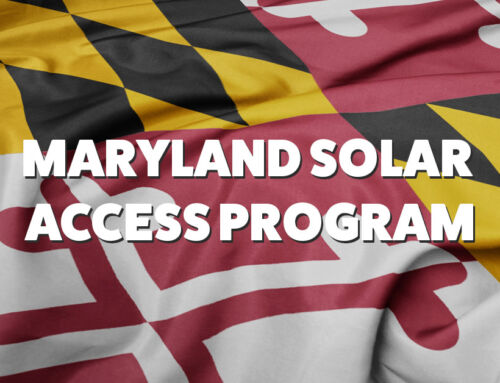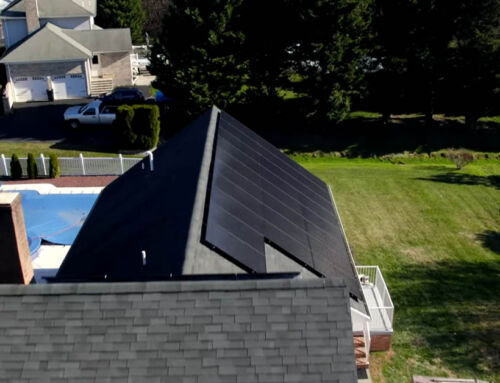The Federal Solar Tax Credit
There are some great incentives available for homeowners who choose to go solar. One of the biggest comes from the Inflation Reduction Act. The Solar Investment Tax Credit (ITC), or The Residential Clean Energy Credit, was enacted in 2006 and recently extended through 2032. The federal solar tax credit is equal to 30% of the cost of your solar installation.
Rather listen to a podcast-style summary of this article? Use the player below:
It doesn’t reduce the upfront cost of your installation. But it does lower what you owe in federal income taxes.
There’s a lot of confusing information about solar energy incentives, especially the Solar Investment Tax Credit. But it’s pretty straightforward. And we’re here to help you make sense of it all. If you’re ready to schedule your Free Solar Analysis, fill out the form and one of our team members will get in touch.
View this post on Instagram
How Do Homeowners Qualify For The Federal Solar Tax Credit?
Three main criteria determine whether you qualify for the federal solar tax credit:
- 1. You have to own the solar energy system. It doesn’t work if you’re leasing.
- 2. You must install the solar panels on your primary or secondary residence.
- 3. You must have taxable income.
View this post on Instagram
To claim the credit, you must file IRS Form 5695 as part of your tax return. This is a simple process. Your accountant can fill it out or is automatically calculated through all standard tax software like TurboTax.
What Costs Qualify For The Federal Solar Tax Credit?
Almost all of the costs associated with installing solar panels are eligible for the tax credit. The qualified costs include:
- Contractor Labor: this includes the costs associated with planning, preparation and installation, including permitting fees and inspections.
- Solar Equipment: this includes equipment like solar panels, inverters, wiring, racks and batteries.
- Sales Tax: Sales tax is exempt.
View this post on Instagram
Are Solar Batteries Eligible For Residential Federal Solar Energy Tax Credits?
Residential solar batteries paired with solar panels are eligible for the tax credit. Beginning in 2023, standalone battery installations without solar panels will be eligible for federal tax credits. After 2023, batteries must be at least 3 kilowatts (kW) in capacity. Most household storage batteries are around 10kWh in capacity.
What If My Tax Credit Is Worth More Than I Owe?
Solar energy tax credits are not refundable, so you won’t receive a tax refund if your credit is worth more than what you owe in taxes. If there is any leftover tax credit at the end of the year, it will be used again the following year.
For example, if you get a $5,500 tax credit for installing your solar panel system, but you only owe $4,000 in Federal Income Taxes, $1,500 worth of tax credits can be applied to next year’s taxes. You can carry forward the tax credit for up to five years. The amount carried forward is calculated based on your total liability.
Federal Tax Credits for Nonprofit Organizations
With the passing of the Inflation Reduction Act (IRA) of 2022, tax-exempt organizations can now take advantage of the non-residential federal tax credit through a direct pay option starting in the tax year of 2023. Until 2024, all systems will receive the tax credit, a direct payment of 30% of the installation cost. This credit is available through 2032, then reduces to 26% in 2033 and 22% in 2034.
What About State, Local, and Utility Incentives?
Depending on your state and county, various local tax incentives are available for homeowners who invest in solar power.
- Resources about Maryland solar incentives if you’re in Maryland.
- Resources about Delaware solar incentives if you’re in Delaware.
- Resources about Pennsylvania solar incentives if you’re in Pennsylvania.
How Do Utility Incentives Affect My Tax Credit?
Usually, a utility incentive is deducted from the cost of the installation before the tax credit is applied.
Is the 30% Federal Solar Tax Credit Going Away After 2025?
You may have heard that the 30% Federal Solar Tax Credit originally was set to expire completely in 2034. However, a recent House bill could potentially phase out this significant credit for residential solar installations.
What does this mean for you?
If this bill passes, homeowners may no longer be able to claim the 30% Federal Solar Tax Credit after the end of 2025. This means that if you’ve been considering switching to solar, this could truly be your last opportunity to take advantage of such a substantial saving – 30% off the total cost of your solar system!
What you can do:
We understand that deciding to go solar is a big decision, and we want to ensure you have all the information and opportunities available to you. If you’ve been on the fence, now is the time to act. Don’t miss out on potentially saving thousands of dollars on your solar installation.
We strongly encourage you to schedule your solar estimate with us as soon as possible. Our team can help you understand how this potential change might impact your investment and provide you with a personalized quote.
Ready To Get Started?
If you’re serious about going solar, the next step is to have professionals assess your home’s solar potential. At American Sentry Solar, we’ll consider factors like your roof’s orientation, angle, and the amount of sunlight it receives, as well as your energy consumption and budget. Our free solar analysis is the best way to determine whether solar energy is viable for your home.


